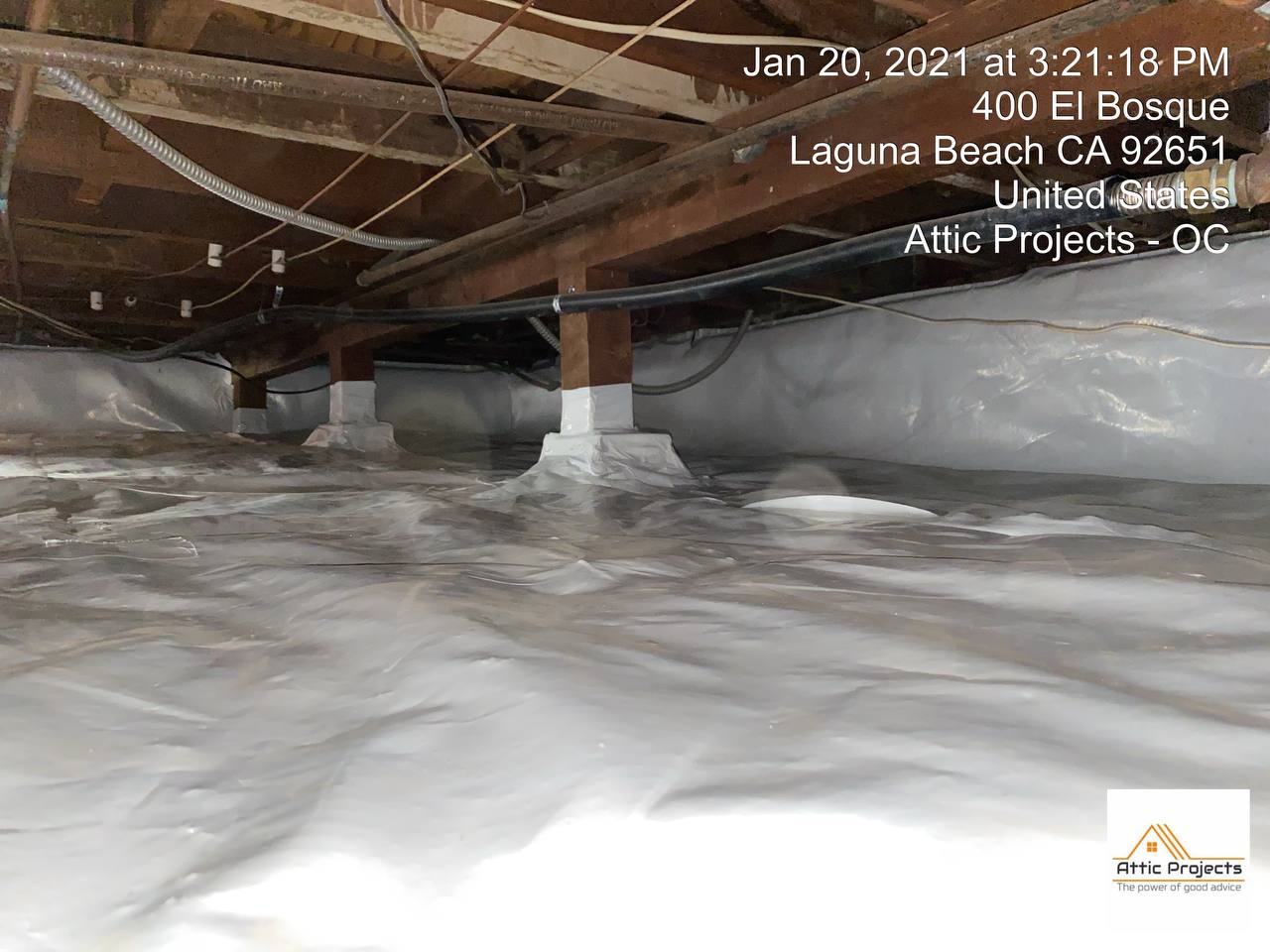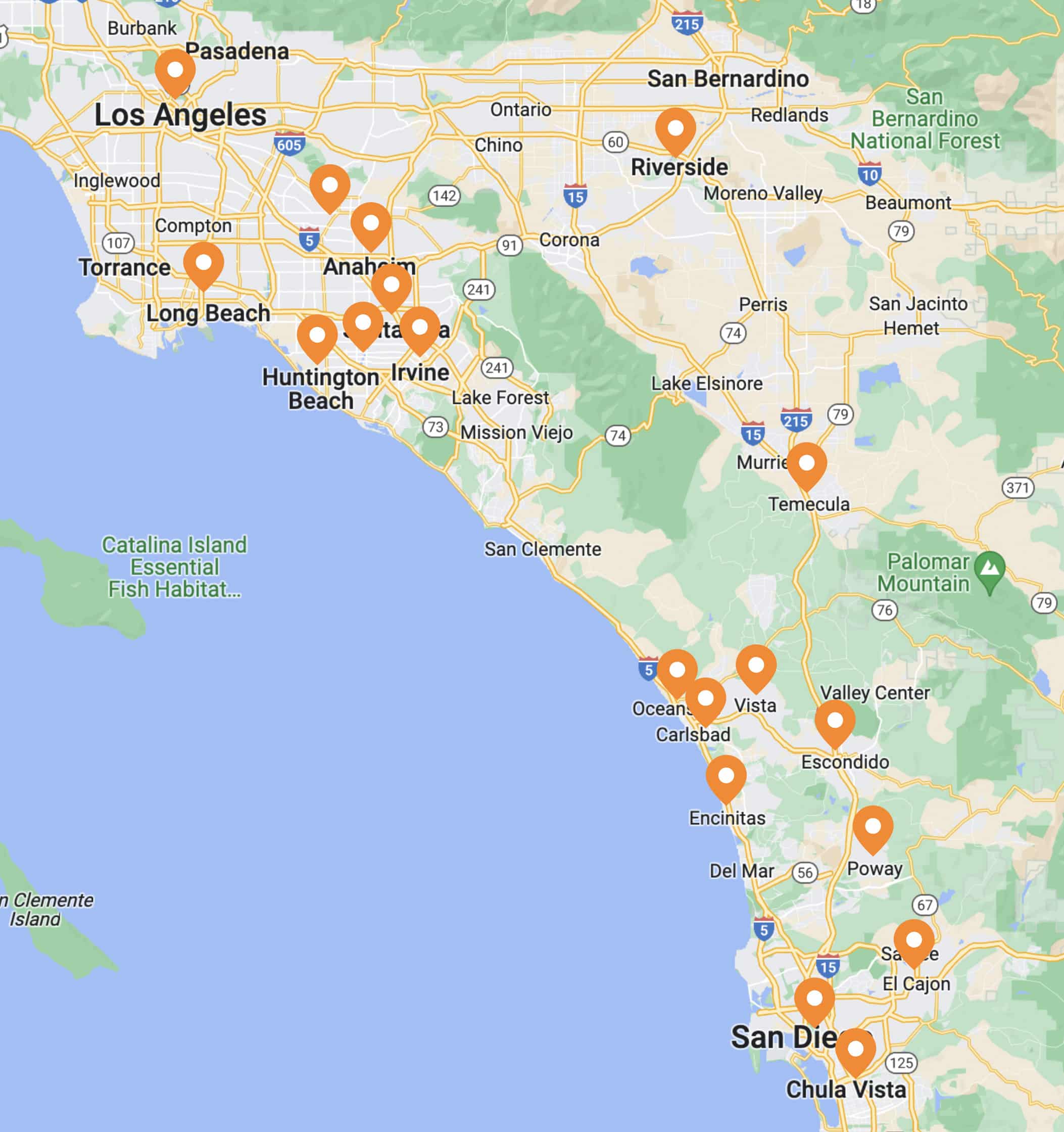
Should Wet Insulation Be Replaced?
Insulation is key in keeping your home comfortable and reducing energy usage. But it also faces various threats, with moisture being chief among them. Wet
Fill out the form or call at
One of the most significant issues facing crawl spaces is unwanted moisture resulting from flooding and water leaks. This moisture can lead to smell, wood rot, degraded insulation, and the growth of mold, mildew, and fungi.
This moisture can provide the perfect environment for pests to move in and begin to destroy the space. Crawl spaces quickly become infested with rodents, animals, and various types of other pests that make their home under your house.
The best way to rid your crawl space of pests, unwanted moisture and stop wood rot and mold growth is by installing a vapor barrier. Installing a vapor barrier is energy efficient and can transform your crawl space from a smelly, moldy area into a dry, clean space that can easily be used for additional storage.

Installing a vapor barrier in your crawl space doesn’t have to be a challenge. We make the installation process fast and simple, so you can feel assured that your home is safe from pests, mold, and moisture.
Before we begin, we will need to remove any items in the crawl space that can be transferred out to not be in the way. The crawl space will then need to be cleaned and any holes filled.
Once the crawl space is cleaned and repaired, it will need to be measured for specific dimensions to ensure that the barrier installed fits and doesn’t leave room for moisture and pests to creep in.
When we have the correct fitting for your vapor barrier, we will then install it, along with insulation that helps lower your cooling and heating costs.
Taking care of your house starts from the ground up. Our team is ready to turn your smelly crawl space into a clean area that will increase the value of your home and your time spent in it.
Nobody wants a crawl space collecting mold, moisture, and pests and threatening their family’s health.
If you are ready to clean up your crawl space and install a vapor barrier, contact Attic Projects for a custom estimate or call us.
Crawl Space Cleanup | Crawl Space Insulation Installation | Crawl Space Insulation Removal | Vapor Barrier | Attic Cleaning | Attic Sanitation | Mold Remediation | Attic Insulation Installation | Attic Insulation Removal | Radiant Barrier Insulation | Air Duct Sealant & Repair | Rodent Proofing & Removal | Attic Remodeling & Storage | Attic Stairs & Doors | Asbestos Removal | Crawl Space Doors
Helpful Article: Crawl Space Door Ideas

Crawl Space Cleanup | Crawl Space Insulation Installation | Crawl Space Insulation Removal | Vapor Barrier | Crawl Space Doors
Orange County | Everett | Bellingham | San Diego | Mt. Vernon | Tacoma | Seattle


Yes! When you buy a home, this is a great time to inspect your crawl space and install a vapor barrier. By installing a vapor barrier early on, you can prevent moisture from building up in your crawl space and prevent some unwanted issues down the road. This can save you a lot of money in the future.
The answer is to install a vapor barrier. Crawl spaces are notorious for having excessive moisture and a vapor barrier has the ability to stop the moisture from entering your crawl space. This can help prevent mold and bacteria from growing and contaminating the rest of your home. When moisture enters your crawl space it can lead to damaged insulation, rotting wood, mold, mildew, and fungi. Additionally, rodents and other types of pests may find a moist crawl space the perfect place to move it and wreak havoc.
Vapor barriers are very effective at keeping unnecessary moisture and water leaks out of your crawl space. Without a vapor barrier protecting your crawl space, you could end up with rotting wood, damaged insulation, foul odors, mold, mildew, and fungi. A vapor barrier can protect your crawl space from a lot of unnecessary damage. Plus, when you hire Attic Projects to install your vapor barrier, all work is insured, and you get a 5-year warranty on your vapor barrier.
If you are experiencing any of the following signs, it means you have a moisture problem that could be solved through installation of a vapor barrier: standing water, respiratory issues, mold/fungi growth, musty odors, rotting, rusting, peeling of paint, or pest infestations.
We doubt that you’ll need us again, but if you do — we got you covered.

*Insulation materials qualify for our 20 Year Warranty

We doubt that you’ll need us again, but if you do — we got you covered.
*Insulation materials qualify for our 20 Year Warranty
Rodents are a nightmare for any homeowner. They can lower the value of your home by causing serious damage, foul odors, and extensively unsanitary conditions. They also pose a significant health risk to you and your family by spreading disease and causing illness. The last thing you want is to waste your time removing rodents, only to have them move right back in. At Attic Projects, we not only humanely remove the rodents and pests from your home, but we also rodent-proof your home so they can’t come back. In order to keep the pests and rodents out permanently, you have to close up every entry point that they may squeeze into. Call Attic Projects today to get your free estimate.
Fill out the form or call us at

Insulation is key in keeping your home comfortable and reducing energy usage. But it also faces various threats, with moisture being chief among them. Wet

Summer may be a time of refreshing swims and exciting road trips, but the season also brings many challenges for homeowners. In particularly humid climates,

HISTORY OF FIBERGLASS INSULATION Fiberglass insulation, a material widely used in modern construction, has a history that dates back to the 1930s. The Owens Corning
